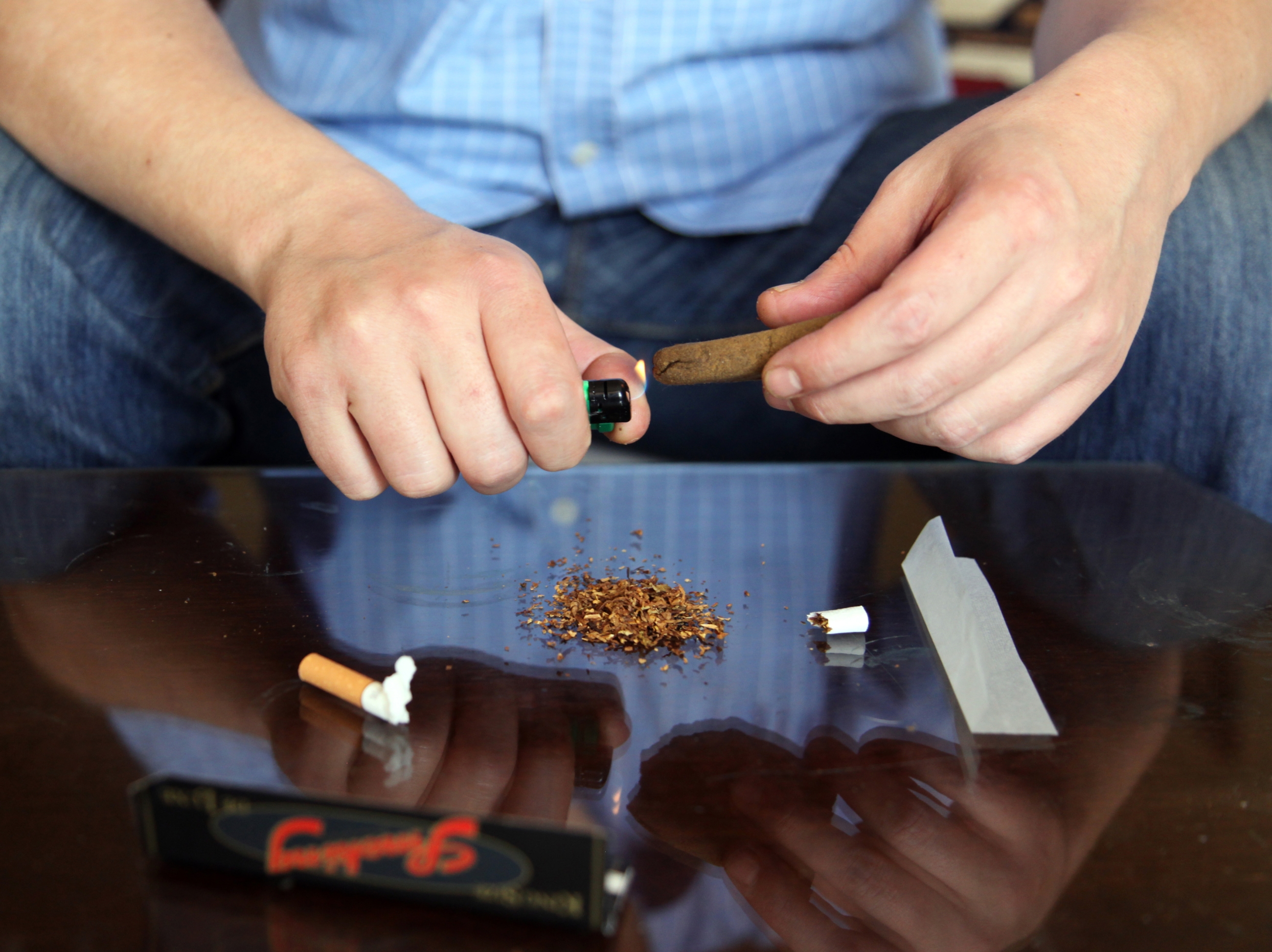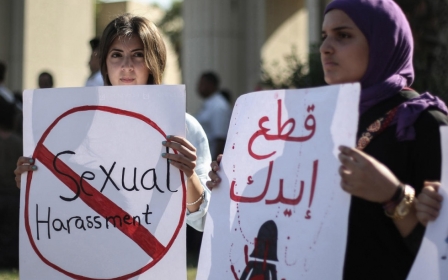Hidden hell: The growing crisis of female drug addiction in Egypt

On her wedding night 13 years ago, Wafaa found her husband injecting ayoun – a cheap powder-mix found in Egypt that gives users a heroin-like hit. “It’s just something fun,” he told her. Wafaa had already taken other drugs and pestered him to let her try it. He refused at first but later relented. She began taking it with him, and then going with him to buy it every day.
“A week after I’d first injected I woke up and told my husband – ‘I feel like my bones are broken,’” recalls Wafaa, now 32-years-old. “And he replied: ‘Well, now you are an addict.'” Her addiction lasted several years.
Female drug addiction is a fast-growing issue in Egypt, yet many women often struggle to access the support and drug rehabilitation they need.
The results of a 2008 survey conducted by Egypt’s National Council on Fighting and Treating Addiction (NCFTA) found that 8.5 percent of the Egyptian population were addicted to narcotics.
“Now, six years later, with a marked escalation of tramadol use, I guess that the number [of drug dependents] will have doubled,” says Ehab El-Kharrat who, as executive director of the private drug rehabilitation organisation Freedom Programme, is regarded as one of the foremost experts on drug abuse in Egypt. Research from the NCFTA also found that drug use among people over 15 years old had increased from 6.4 percent to 30 percent.
The NCFTA’s 2008 study found that the ratio of male to female drug addiction was around 5:1 in favour of men. El-Kharrat thinks that the ratio has since narrowed to something more like 3:1. Others – like Wafaa - believe it is approaching parity.
Female drug addiction
There are a number of factors behind increased drug use in Egypt and the growing use among women. Cocaine - affordable for only the rich elite of Egyptians – is rarely used. Hashish is the most commonly used illegal narcotic in Egypt but most of the drug rehabilitation clinics tend to deal with addictions to heroin, ayoun, or tramadol - a strong and highly addictive painkiller.
El-Kharrat says that tramadol use soared during the political upheaval that followed the 2011 uprising, when smuggling and dealing drugs became easier as security faltered. Tramadol has also become prevalent because it is so cheap – a pill typically costs EGP 2-3.
Heroin and its derivatives are also fairly cheap and easily available as Egypt is a significant transit country for the drug on its way to Europe.
“It is basic market forces; the commodity has been on the market now for a long time, so the more sheltered female population is being reached,” says El-Kharrat. “Most women are still accessing the drug subculture through their male partners, husbands, boyfriends and so on; though an increasing number are accessing it through female friends.”
Emad Fawzi, a lawyer and head of the popular committee in the working-class Sakiat Mekki neighbourhood of Cairo works closely with women in the area. Fawzi says increased economic pressures encourage some people to take drugs. Both men and women often take tramadol to reduce stress, and to give them the energy to work longer hours and to meet expectations for sex.
“It is now much more common for women to sell drugs” adds Fawzi. “They are the biggest sellers of tramadol.” Fawzi claims that the punishment for women is more lenient and they are less likely to be arrested – sometimes because they inform for the police.
Wafaa says that, as her drug addiction worsened, her family and friends stopped lending her money. “We had also sold everything; the furniture, jewellery, carpets – even the doors,” she recalls. She and her husband became drug dealers to finance their addiction.
When the police arrested her husband for dealing, they told Wafaa that they would protect her as a drug user and dealer if she became an informer. She gave them the name of another dealer they wanted to arrest and, as she had proved herself, she claims the police told her they could supply her with drugs every day. Her father has a friend in the Ministry of Interior – he pulled some strings and the police stopped using her as an informer.
Wafaa spent some time living on the streets and later met a man who was also addicted to ayoun. They began committing robberies together; he would drive and Wafaa would reach out of the car’s passenger window and snatch bags from people in the street. She was caught and spent time in prison, but drugs were plentiful in jail and when she came out she was still addicted.
She went to both public and private hospitals for detoxification – around 30 times over several years – but she would immediately relapse. She started attending Narcotics Anonymous meetings in a vain effort to get sober – at one meeting she met the man that she used to rob with. He had been through drug rehabilitation and had stopped taking drugs. Wafaa thought: “Why can’t I be like him?”
Gender attitudes and rehab
Despite the increased numbers of female drug users in Egypt, women are much less able to access detoxification or rehabilitation services. El-Kharrat says that, in his experience, the male-to-female ratio in drug rehabilitation is currently around 15:1 – although this was closer to 30:1 a few years ago.
Only 40 spaces out of 600 are available to women at the Freedom Programme’s rehabilitation centres. The Home of Hope private rehabilitation company say they have around 300 spaces across eight centres, of which 20-30 spaces are available to women.
El-Kharrat believes that the main barriers preventing male drug users accessing rehabilitation are a lack of awareness, funds and spaces. Female access to drug rehabilitation is further limited by conservative social attitudes towards gender. “For female drug users the stigma is still high and the family willingness to pay for them is lower than male drug users,” says El-Kharrat.
Hesham Mamdouh, sector duty manager at Freedom’s Maadi clinic for women, says that having a drug user as a relative can bring disrepute onto the entire family, which is likely to be amplified if the person is female. “If the family has a female addict they often don’t admit it and they don’t ask for help,” says Mamdouh. “It’s something shameful – she will not be able to marry, [it causes problems for] her brother, her father.” The impulse is often to hide the problem, rather than confront it.
El-Kharrat also says that female drug addicts often suffer from a “double stigma” as around 80% of their female service users have sold sex. “It’s a huge stigma to sell sex in Egypt. So if a girl has sold sex to feed her habit, the family doesn’t want to support her anymore, they just want to disown her.” Female drug users are often at heightened risk of contracting HIV and other sexually-transmitted diseases.
Class often dictates the kind of drugs people take – poorer women tend to be addicted to cheaper drugs such as tramadol – and the extent to which they can access drug rehabilitation. Places are scarce in government-run rehabilitation centres and private rehabilitation clinics can cost several thousand Egyptian pounds a week.
El-Kharrat estimates that there are around 1,000 rehabilitation spaces available in Egypt and that perhaps only a fifth are available to people in the lower and lower-middle-class income brackets. “We need urgently around 20,000 beds. At least 15,000 should be available to lower and lower-middle classes,” says El-Kharrat.
Even when spaces are available, the stigma surrounding female drug addiction is sometimes stronger in conservative, poorer areas. “Working-class females are using drugs but they are not seeking rehab” says El-Kharrat.
Class and community attitudes are also factors in rehabilitation success rates, which are generally lower for women in Egypt.
Walid Saleh, a doctor working at Home of Hope’s detoxification and rehabilitation centres, says that the success rate for women who complete the rehabilitation programme is around 60 percent, whilst for men it is around 80 percent.
Saleh thinks that the disparity may be partly down to a lack of support and community attitudes which mean that families are often more concerned with hiding problems than supporting female family members post-rehabilitation. “Often the community continues to look at women [ex-addicts] in a negative way, even years after they have stopped taking drugs,” says Saleh.
Success rates are also lower for women at Freedom’s rehabilitation clinics. El-Kharrat says that women – especially from poorer backgrounds – are often less able to access support networks when they return to their communities. “This makes it harder to reach them…and to keep them from relapsing.”
Economic pressures on working-class women may lead them back towards taking drugs to boost their capacity for work or to cope with stress. Support is often also necessary to deal with co-dependency – especially when women are living with partners who are using drugs.
Khaled Helmy, psychiatrist at New Nozha detoxification clinic in Alexandria and Medical Director at Alex Health Resort clinics, says that some drug dependant people try to self-medicate because of a lack of options. “If they are taking heroin, maybe they think to take tramadol as a substitute before stopping,” says Helmy. “But in self-medication the risk of relapse is very high.”
Facing the problem
El-Kharrat says that, overall, the stigma surrounding drug rehabilitation has begun to decrease in Egypt: “People are talking about drug addiction as a disease; not a crime or a perversion, or being a spoilt child. So the discourse has changed.”
Yet, there is a huge amount of work to be done in tackling substance misuse, challenging gender attitudes, meeting the demand for rehabilitation, and undertaking preventative and educational work regarding drugs.
The Freedom Programme is working on project in poor and informal areas to raise awareness about drugs, mitigate drug-related gender violence, and to reach out to female drug users. Many female service users at drug rehabilitation clinics said that they had received no drug-related education at school or in higher education.
Helmy also criticises the government’s failure to effectively regulate private clinics. “We have now a huge problem that many rehabilitation centres are not licensed,” says Helmy, adding that many are staffed by ex-addicts who are often not medically or therapeutically qualified.
Some reports have also detailed neglect and a lack of qualified medical professionals at public clinics. And the police exacerbate problems when they take advantage of vulnerable female drug users.
“I was treated as garbage,” says Wafaa, referring to both attitudes in her community and of healthcare professionals working at detoxification centres. But she says that at her licensed, private drug rehabilitation placement - alongside medical professionals - many of the staff members had experienced addiction. “They understood me, encouraged me, and provided me with hope,” says Wafaa.
Wafaa has not used drugs for seven years. She now works as a support worker in a rehabilitation centre helping others overcome their addictions.
“Now I am proud of myself. I learned a lot and I am able to face problems and deal with them,” says Wafaa. “I help others to do the same.”
But in accessing rehabilitation and staying off drugs, Wafaa is atypical. Coming from a middle-class background, she admits that she is lucky to have had the necessary funds and support to help her succeed in the rehabilitation process. The vast majority of Egypt’s female drug dependents are not so fortunate.
Middle East Eye propose une couverture et une analyse indépendantes et incomparables du Moyen-Orient, de l’Afrique du Nord et d’autres régions du monde. Pour en savoir plus sur la reprise de ce contenu et les frais qui s’appliquent, veuillez remplir ce formulaire [en anglais]. Pour en savoir plus sur MEE, cliquez ici [en anglais].




